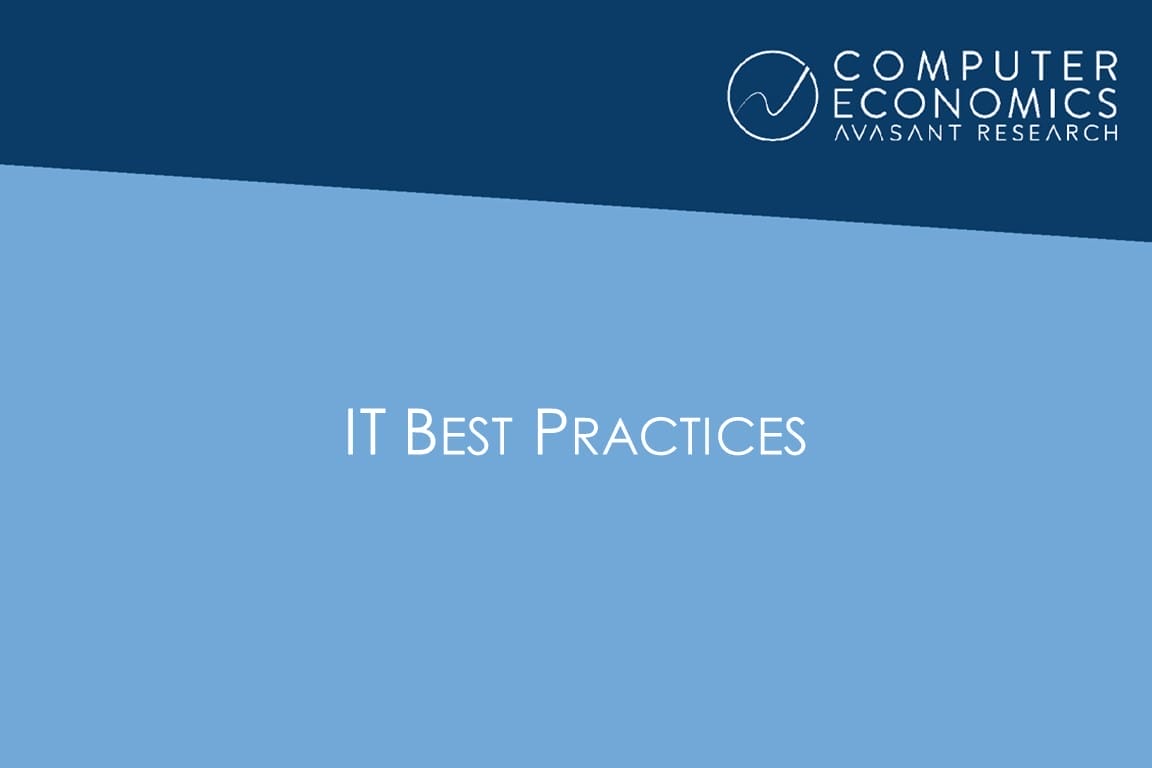-
![The Next Wave of Outsourcing: Remote Infrastructure Management sourcing - The Next Wave of Outsourcing: Remote Infrastructure Management]()
The Next Wave of Outsourcing: Remote Infrastructure Management
In the pre-cloud era, the rapid evolution in IT architecture and remote servermanagement technologies, changes in customer behavior and demand pattern, and maturity in the provider and offshore service delivery landscape has propelled the industry toward accelerated adoption of Remote Infrastructure Management (RIM). Emergence of digital, mobile and cloud based solutions has altered the way IT infrastructure is managed, thereby changing the very complexion of RIM strategies.
July, 2008
-
![Consolidation is Key in Reducing ERP Support Costs Research Bytes - Consolidation is Key in Reducing ERP Support Costs]()
Consolidation is Key in Reducing ERP Support Costs
(IRVINE, Calif.) Organizations wanting to optimize their ERP support costs should strongly consider consolidating and standardizing on a single version and instance of their primary vendor's platform.
April, 2008
-
![Few IT Organizations Make Users Pay Research Bytes - Few IT Organizations Make Users Pay]()
Few IT Organizations Make Users Pay
(IRVINE, Calif.) Despite the heated debate over chargeback practices in the earlier part of the decade, 42% of companies still do not charge back any portion of their IT budgets and less than a quarter engage in aggressive chargeback practices, according to a Computer Economics survey of IT managers.
December, 2007
-
![IT Change Management Still Lacking in Many Organizations Research Bytes - IT Change Management Still Lacking in Many Organizations]()
IT Change Management Still Lacking in Many Organizations
Most problems in the data center are caused by changes that are introduced into the production environment. Change management, therefore, is arguably the most critical requirement for a successful IT organization. This article investigates the effectiveness of IT change management practices and considers the impact of staffing levels on the overall quality of this process. We also examine the issues that may arise by failing to adequately develop and staff an IT change management function. (5 pp., 3 figs.)
October, 2006
-
![Long-Term Trends in IT Budget Line Item Ratios IT Spending Benchmarks - Long-Term Trends in IT Budget Line Item Ratios]()
Long-Term Trends in IT Budget Line Item Ratios
This article, the third in our series on long-term trends in IT spending and staffing, analyzes changes in IT spending on a line-item basis, based on 10 years of data from our IT spending and staffing surveys. Using the ratio of each budget line item to the total IT budget, changes in corporate spending are analyzed for the following categories of IT spending: personnel, training, recruiting, data center hardware (servers and storage), software, desktop and end-user hardware, network infrastructure, outside services, facilities, overhead and supplies, security, and business continuity. By understanding long-term shifts in spending trends, the future direction for spending in each category can be better understood. (14 pp., 12 figs.)[Executive Summary]
May, 2006
-
![The Case for Mainframe Migration and Consolidation IT Best Practices - The Case for Mainframe Migration and Consolidation]()
The Case for Mainframe Migration and Consolidation
Mainframe computers still occupy a major position in the hardware inventory of many data centers, especially in certain industries such as banking, finance, and insurance, and among larger companies. According to statistics collected in our annual IT spending survey, the economic performance of mainframes is not as good as that of other hardware platforms, especially in data centers where mainframe computers are used in a mix with other classes of servers. For organizations with such a heterogeneous server mix, these findings may be used to justify migration of mainframe applications to other server platforms or, at a minimum, undertake a mainframe server consolidation strategy. (8 pp., 7 figs.)[Executive Summary]
April, 2006
-
![Overcoming Obstacles to Data Classification Research Bytes - Overcoming Obstacles to Data Classification]()
Overcoming Obstacles to Data Classification
A formal data classification scheme is fundamental to information security. Yet, many organizations--even those that profess a commitment to protecting company and customer information--fail to implement data classification. This article looks at the reasons that data classification can be difficult to develop and implement in practice and offers several practical guidelines to overcome these obstacles.
April, 2006
-
![Ten-Year Trends in IT Spending and Outlook for 2006 IT Spending Benchmarks - Ten-Year Trends in IT Spending and Outlook for 2006]()
Ten-Year Trends in IT Spending and Outlook for 2006
This article examines long-term trends in IT spending, based on Computer Economics surveys of several thousand CIOs and senior IT managers in North America over the past 10 years. The long term trend for three key IT spending metrics are documented: IT budget as a percent of revenues, IT spending per employee, and the percentage change of IT budgets year over year. Bottom line: the post-Y2K bust and dot-com collapse in IT spending are now behind us, and IT spending ratios have returned to their long term trend lines. We use these trends to forecast these statistics for the coming year.
February, 2006
-
![The Key Advantage of Open Source Technology Trends - The Key Advantage of Open Source]()
The Key Advantage of Open Source
An informal survey of visitors to the Computer Economics website indicates that, in using open source software, "reduced dependence on software vendors" is more important to buyers than low cost. An earlier version of this report first appeared as a free Research Byte on our website. Shortly after publication, the Research Byte was linked by Slashdot, and Computer Economics was deluged by over 50,000 hits in one day. This report includes material originally presented in the earlier Research Byte, along with additional insights gained from the resulting feedback.
May, 2005
-
![Data Center Recovery Site Planning: Geographic Considerations IT Best Practices - Data Center Recovery Site Planning: Geographic Considerations]()
Data Center Recovery Site Planning: Geographic Considerations
The U.S. federal government and private industry have developed new guidelines that can be helpful in deciding the optimal distance between the data center and its recovery site. Based on various studies conducted over the past few years, it is clear that the placement of a recovery site too far away from the main data center can be as much of a problem as placing it too close. This research report provides recommendations for the optimal distance, based on U.S. Federal Government guidelines, industry best practices, and the need to balance risk with speed of recovery. (5 pp. with footnotes of sources.)[Executive Summary]
March, 2005












